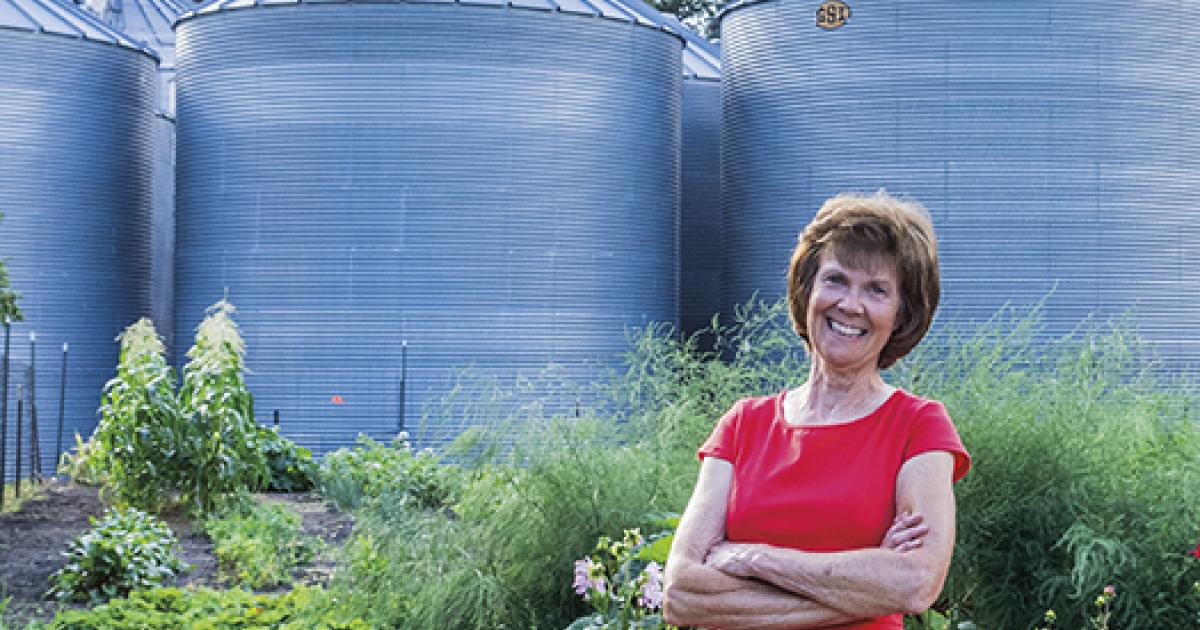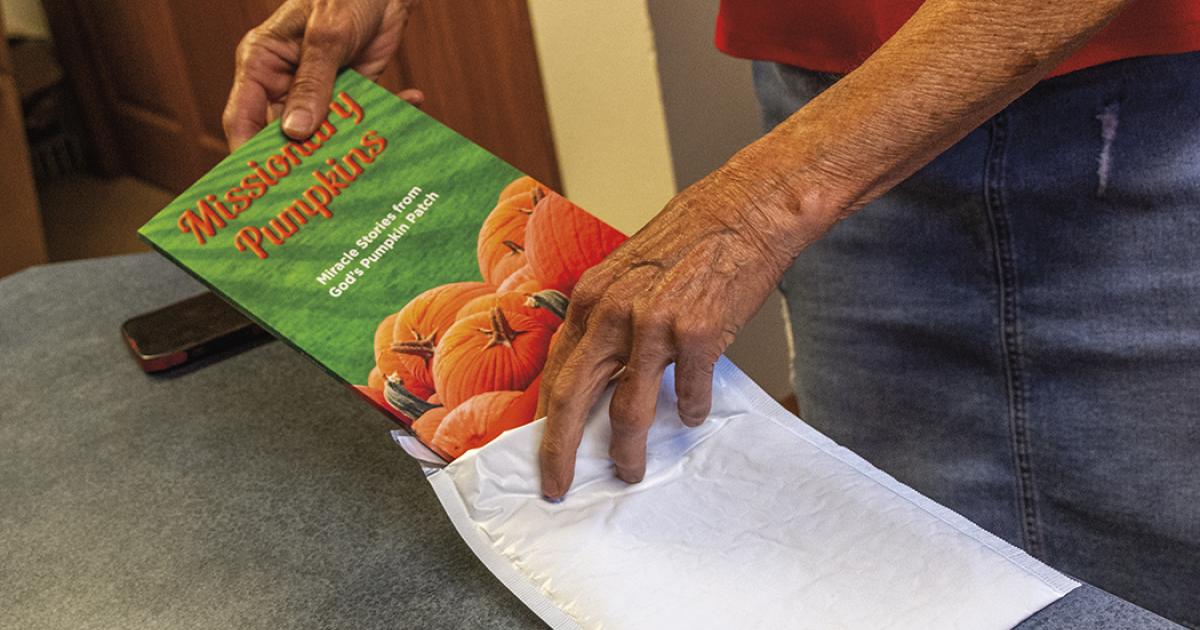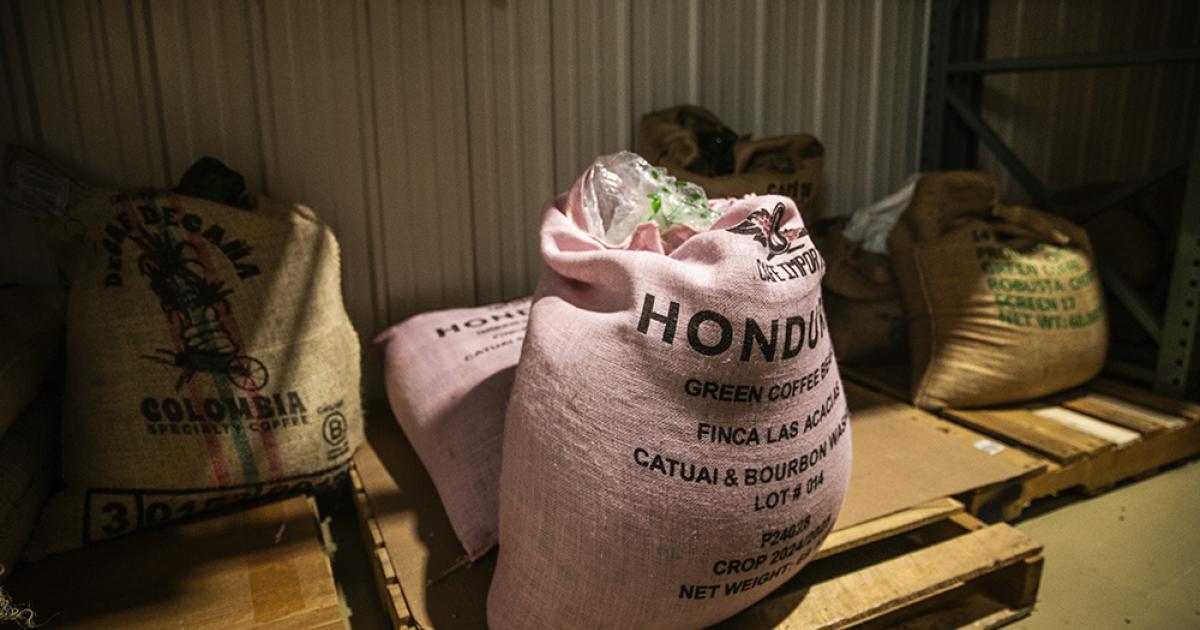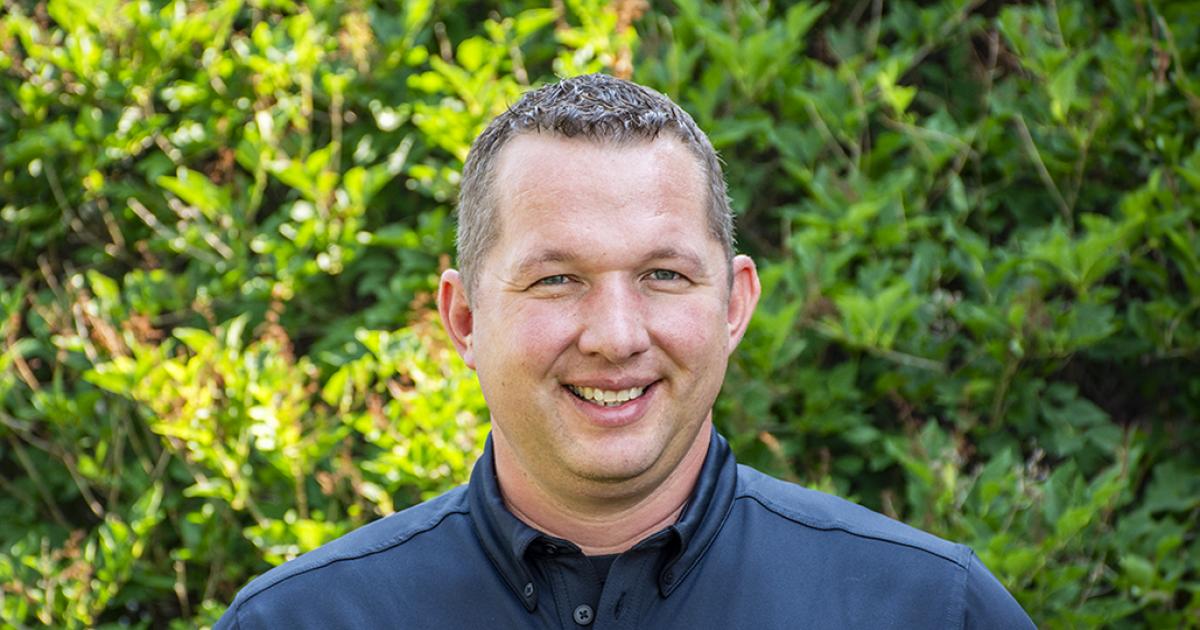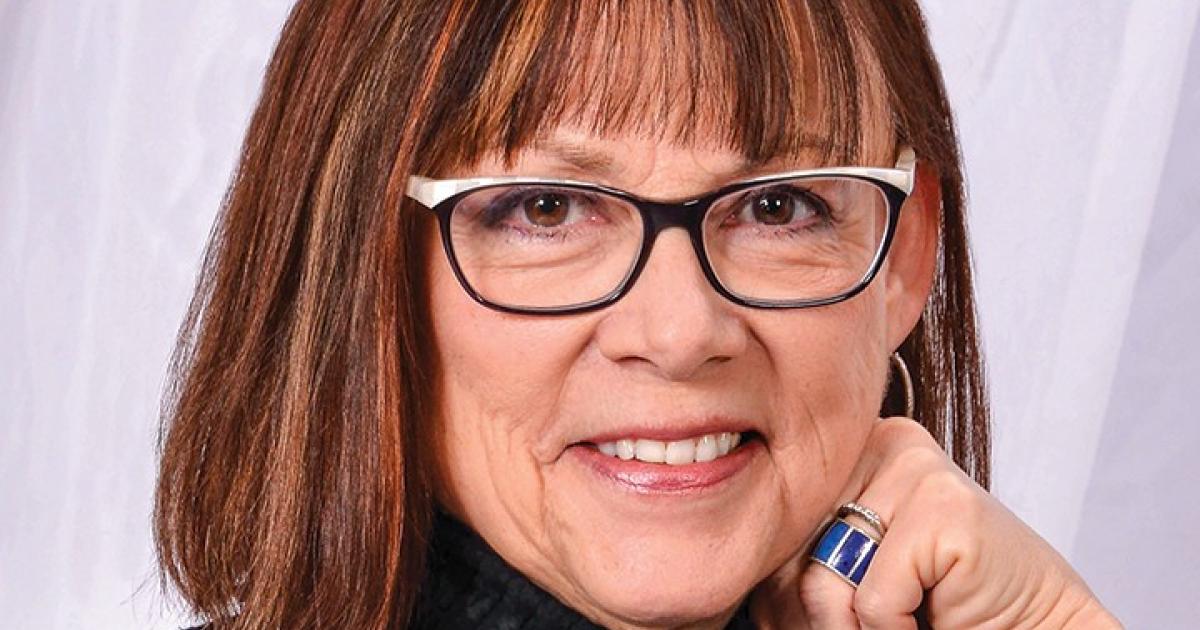Cheryl Erickson. Story and Photos by Katie Ryan-Anderson
In “Cinderella,” the fairy godmother waves her wand, turning a pumpkin coach into a carriage. The pumpkin served as a vessel – helping Cinderella find her prince.
Like the fairy godmother, one woman's pumpkins help people find Jesus.
For two decades, Cheryl Erickson planted seeds in the ground. She hoped they’d grow to the heavens, or rather, help people find heaven themselves.
AGRICULTURAL AND SPIRITUAL GROWTH
The journey began in 2000. The decade sparked new technological advancements, including camera phones and iPods. Lee Ann Womack crooned the year’s top country song, a ballad called “I Hope You Dance.”
In North Dakota, farmers experienced less-than-ideal commodity prices. The U.S. Department of Agriculture estimated the 1999 farm-gate price of soybeans at about $4.80 – far less than the price of $6.47 in 1997.
Those challenging years led Erickson and her husband, Dwight, who are Northern Plains Electric Cooperative members, to consider alternative crops.
“After a few lean years on the farm, Dwight told me to experiment,” she says from her home, about 25 miles northwest of Jamestown.
Cheryl considered herbs, lavender and alfalfa, but finally settled on the crop for which she is now known.
“They call me the pumpkin lady,” she says with a smile.
HARVEST FOR THE HEAVENS
Cheryl planted 1 acre of pumpkins that year – an undertaking she completed by hand. As the years followed, each time she knelt to plant a seed, she knelt before the Lord, asking for a blessing.
“Every muscle cried out for mercy,” she says. “But I was excited to see what would happen.”
That fall, Cheryl harvested a bountiful crop. Yet, the work proved too labor-intensive. It wouldn’t be possible for the Ericksons to earn their living that way.
If a person is to turn lemons into lemonade, Cheryl turned her bounty into benevolence.
Instead of profiting from pumpkins, Cheryl donated the funds to a mission. A guest speaker at church shared the story of Christians in India. Fewer than 2% of people there practice Christianity. That number decreases for congregations without a brick-and-mortar building for services and fellowship.
So that year, 1,100 pumpkins from Buchanan blossomed into churches across the globe.
METEOROLOGY, MULCHING AND MIRACLES
The following years presented challenges. Those challenges, Cheryl says, kept her up at night.
“The first thing I did was panic when I had a problem. The second thing I did was worry. And the third thing I did was pray. As the years went by, I learned to pray first,” she says.
The second year, Cheryl and her daughter planted 2 acres of pumpkins.
“Our muscles were so sore that we could hardly get up and down, but we pressed on,” she says. “Finally, we knelt down and prayed that God would help these seeds produce many, many pumpkins.”
God listened.
“You have to be careful what you pray for!” she says through a smile.
That year’s crop yielded 5,000 pumpkins – almost five times more than her first year.
She called grocery stores, convenience stores, banks, churches and anywhere else that might make a good customer. After panicking and worrying, Cheryl says she prayed.
“Lord, I have tried as hard as I can. I don’t know where else to go or who else to call. Please help me,” she recalls.
The phone rang the next day.
A manager from the farmers market in Fargo called and said he’d buy every pumpkin she had left.
“As the lame man in the Bible did when Peter and John healed him, I went ‘walking and leaping and praising God,’” she says.
That miracle, she says, was the first of many. She catalogs them all in her book, “Missionary Pumpkins.”
Twenty years after her first harvest, Cheryl has raised nearly $200,000 and built 25 churches. She donates the money to Maranatha Volunteers International, which builds proper places of worship. A church building helps a group build confidence and empowers them to grow, and congregations often increase following the construction of a church, according to Maranatha’s website.
Cheryl is one of the few people farming pumpkins – or any crop – for this purpose, says Jeffery Wilson, the assistant to the president for planned giving at Adventist World Radio who helped build 86 churches over 10 years in the southcentral state of Andhra Pradesh in India. Cheryl’s pumpkins helped build 10 of them.
“At one of the churches, members even planted pumpkins outside of the church to honor her,” he says.
Today, Cheryl no longer plants and harvests. Instead, she speaks and writes. She presents at churches and conferences across the region. Already, “Missionary Pumpkins” has earned more than $30,000 – all of which Cheryl donated to build another church.
Cheryl hopes others consider mission projects, too, whether they grow pumpkins or not.
“You don’t have to go across the seas to be a missionary,” she says. “You can be a missionary wherever God places you on this earth.”
___
Katie Ryan-Anderson is a freelance writer and former co-op communicator. She is a Dakota Valley Electric Cooperative member and lives in Marion with her husband and two boys.
To purchase a signed copy of the book or participate in the mission-building project, email Cheryl at cherylerickson@yahoo.com. The book is also available in September and October at Hugo’s Family Marketplace in Jamestown.
FROM ‘THE PUMPKIN LADY’
Pumpkin recipes mean a little bit more to Cheryl Erickson, a Northern Plains Electric Cooperative member who lives about 25 miles northwest of Jamestown. After all, she’s known as “the pumpkin lady.”
If you’re not a pumpkin-pie-on-Thanksgiving purist, serve the pumpkin dessert at Thanksgiving. The soup is a warm taste of fall, with the perfect kick. We’re dreaming of it paired with an ooey gooey grilled cheese sandwich (try the Cider House Grilled Cheese, recipe available on our website, www.ndliving.com).
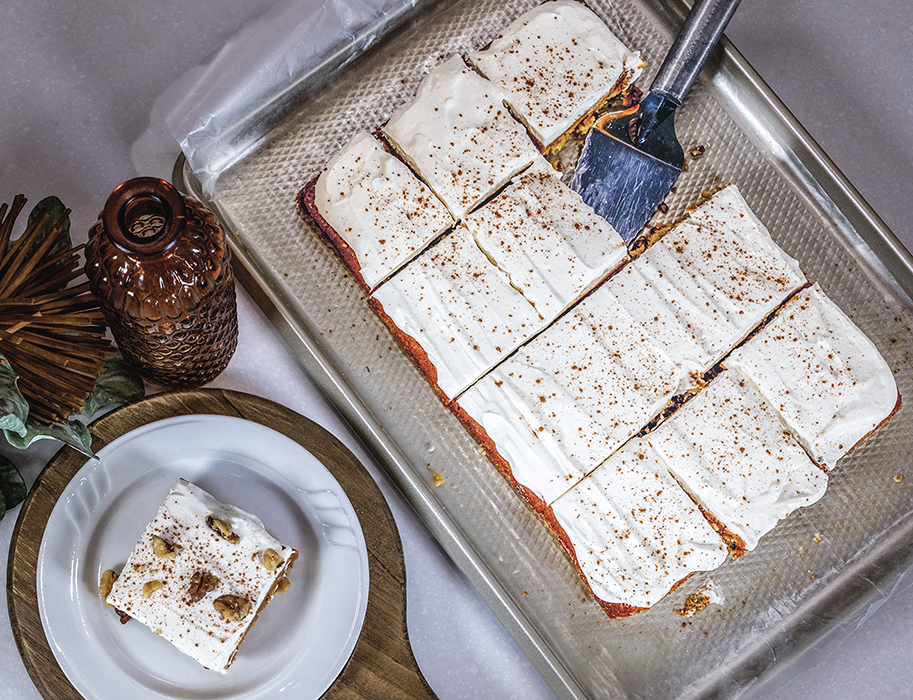
15 oz. can pumpkin
2 eggs
¾ cup sugar
½ tsp. salt
2 tsp. cinnamon
2/3 can evaporated milk
½ box yellow cake mix
1 stick butter, melted
1 cup chopped pecans
1 cup cream
1/3 package light cream cheese
Vanilla
Powdered sugar
Mix pumpkin, eggs, sugar, salt, cinnamon and evaporated milk together, then pour into a 9x13-inch baking pan greased with nonstick cooking spray. Sprinkle half a box of dry yellow cake mix on top, then drizzle melted butter all over. Sprinkle pecans on top. Bake at 350 degrees for 40-50 minutes, until golden brown and pumpkin is set. Cool completely.
Line lightly greased cake pan with wax paper. When dessert is cooled completely, invert onto cake pan.
For the whipped topping, whip cream and cream cheese together with a splash of vanilla and enough powdered sugar* to make the desired consistency. Serve with a dusting of cinnamon and more chopped pecans, if desired.
*TEST KITCHEN TIP: Start with 2 T. powdered sugar, then add in 1 T. increments to taste, until desired sweetness. We used about 4 T. for a mildly sweet whipped topping, so you could still taste the cream cheese, because the love of cream cheese runs deep in our Midwestern hearts. Need we say more?
Recipe by Cheryl Erickson, Northern Plains Electric Cooperative member
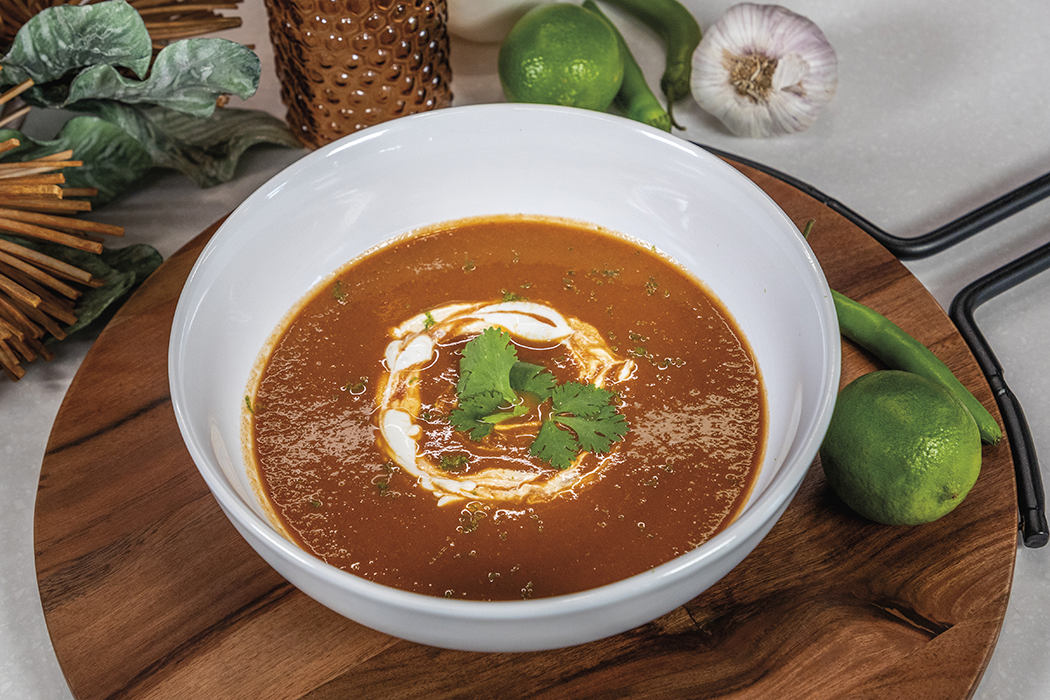
1 T. oil
1 large onion, chopped
2 cloves garlic, minced
2 tsp. ground cumin, plus more to taste
1 tsp. salt, plus more to taste
Dash of cayenne pepper, plus more to taste
3 cups cooked or 1½ (15 oz.) cans (rinsed and drained) black beans
14.5 oz. can whole tomatoes with juice
2 fresh serrano chiles, seeded and minced, or 2 T. canned green chiles
4 cups vegetable broth
2 cups canned unsweetened pumpkin
¼ cup chopped fresh cilantro
1/3 cup sour cream
Zest and juice of one lime
Heat the oil in a soup pot over medium heat. Add the onion and cook for several minutes, stirring, until the onions begin to soften. Add the garlic, cumin, salt and cayenne pepper and cook for about 3 minutes, until fragrant and well mixed.
Purée the beans, tomatoes and chiles in a blender until smooth and creamy. Add the onion mixture to the blender and continue pureeing until incorporated. If necessary, moisten with a little broth.
Return the soup to the pot and add the broth and pumpkin. Taste and adjust seasonings. Cook over medium-low heat for 20 minutes, stirring occasionally.
While soup is cooking, make the lime crema by combining sour cream with the zest and juice of one lime and a pinch of salt.
Serve with cilantro and lime crema.
Green chiles are quite mild and available in cans. Look for Hatch green chiles from New Mexico. Serrano chiles are hot, though by no means the hottest, and must be purchased fresh. They are small and green and, as with all hot chiles, the heat is concentrated in the ribs and seeds. Carefully scrape these away for a milder flavor.
Recipe by Cheryl Erickson, Northern Plains Electric Cooperative member


